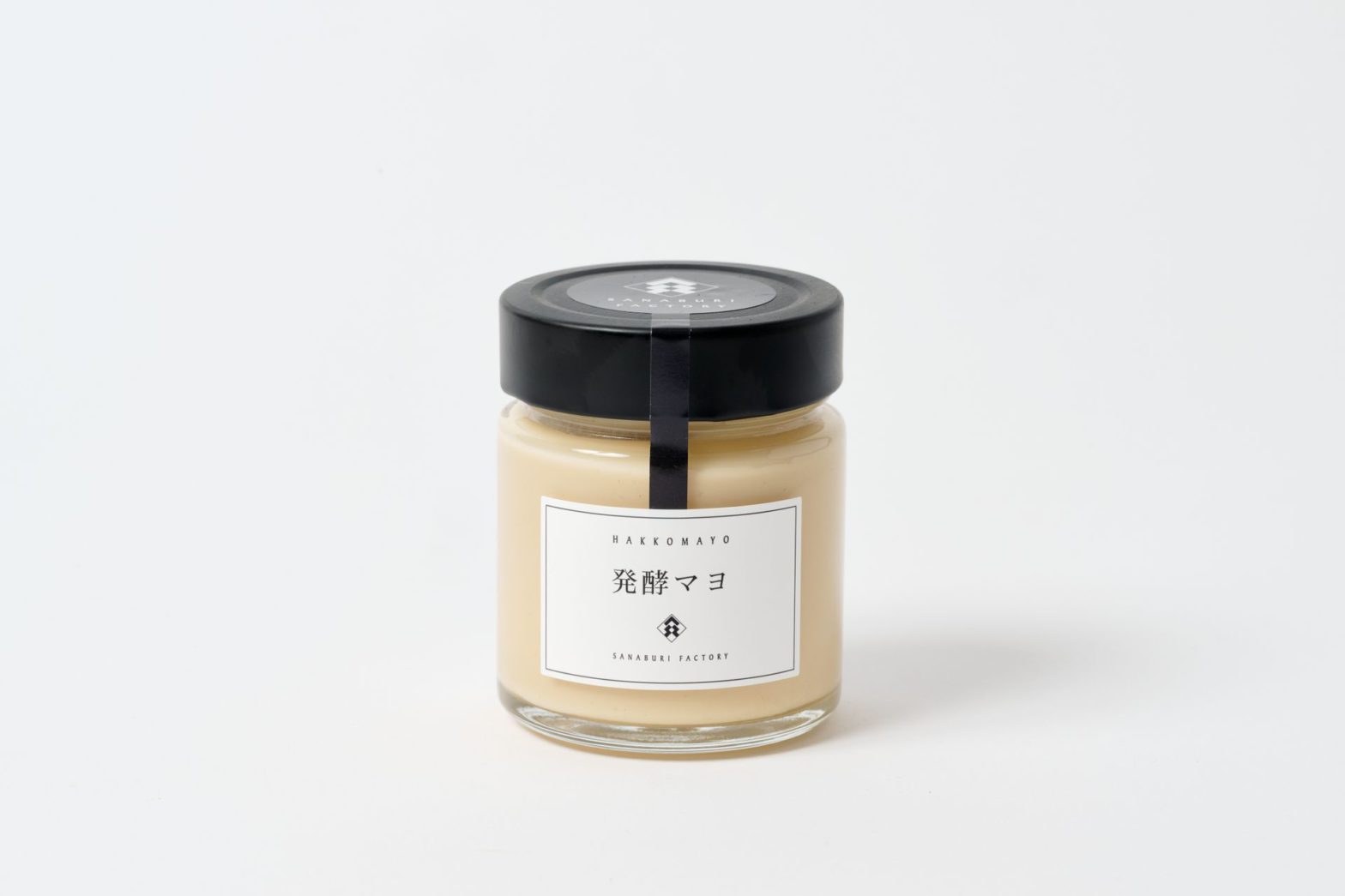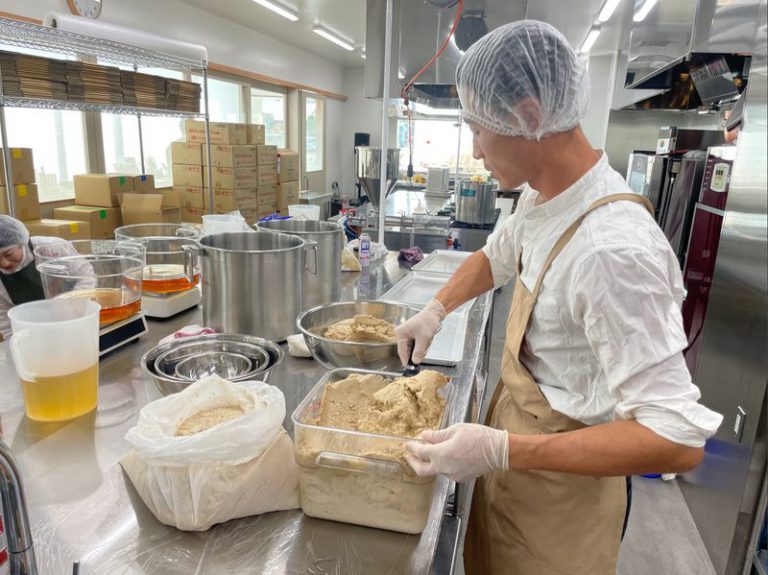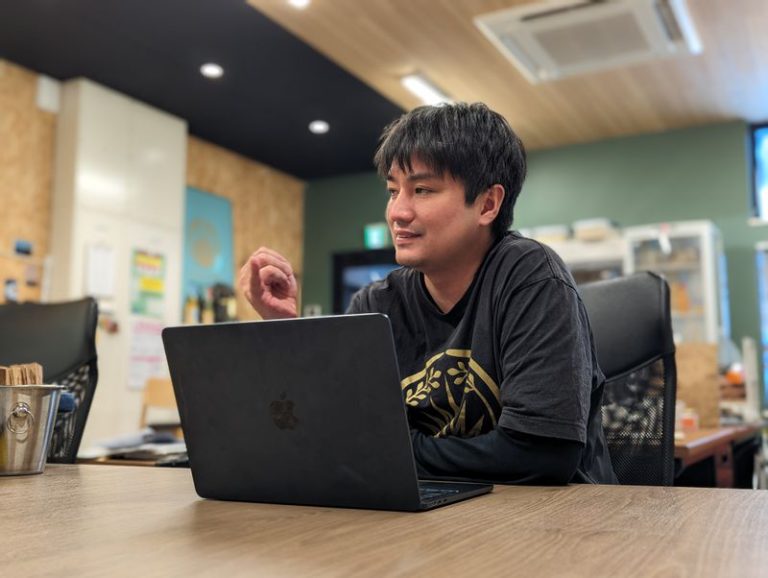Nutrient-Rich Sake Lees for Modern Diets. Fermented Mayo Transforms Food Ingredients Destined for the Bins.

<What makes Fermented Mayo special>

・Leftover sake lees produced at the brewery are repurposed to make a convenient mayonnaise-style seasoning.
・All the ingredients are plant-based, making it suitable for vegans and those with egg allergies.
・It contains no additives. Aside from ingredients like sake lees, mirin, and sake, additional ingredients are also carefully chosen.
・The availability of different flavors adds excitement to using them in diverse ways.
A small processing plant for “making treasures out of things destined for the bins in the world.”

Shuhei Okazumi, the representative of Ine to Agave, opened the SANABURI FACTORY food processing plant in 2022. When a local farmer inquired about what to do with surplus apples due to the pandemic, he decided to establish a processing plant. His aim was to make use of food items that were at risk of being discarded.
Okazumi explains, “We utilize farm produce that ends up being surplus due to social issues such as the COVID pandemic and produce that cannot be sold due to being labeled off-spec or having bruises. My intention behind starting this business was to transform such food items that are at risk of being thrown away into ‘treasures.’ Although our factory is small, we can produce a wide range of products.”
400 tons of food waste are produced annually. Fermented Mayo helps to bring sake lees back into homes.

Fermented Mayo is the first product created at the SANABURI FACTORY. Sake lees, which are produced during the process of making sake, are known to be rich in nutrients. These nutrients are known to contain a variety of components that are beneficial to health and beauty, such as fibers that help to rebalance the intestinal environment, proteins, vitamin B, and minerals. Sake lees, a wonderful foodstuff, used to be commonly consumed at home in the form of soup. However, in modern times, fewer and fewer people eat them, leading to an annual waste of up to 400 tons of sake lees in Akita Prefecture alone.

“Many breweries don’t know what to do with their sake lees. It used to be possible to pay employee salaries from the sale of sake lees alone, but the price plummeted due to reduced domestic demand. You can only make ¥10 per kilogram for feed or fertilizer, and yet you still have leftovers, and disposing of them also costs money. It’s a challenging world for brewers. That’s why I created a product that turns sake lees into something easy to use at home, giving hope to brewers.”

Goki Inoue, the chef and culinary creative director of TETOTETO, took charge of developing Fermented Mayo. Jiuniang, a secret ingredient in Chinese cuisine, inspired the product, but Inoue discovered that tweaking the recipe resulted in it tasting like mayonnaise. He decided to turn it into a familiar fermented mayonnaise. As all the ingredients are derived from plants, the product is suitable for vegans and individuals with egg allergies. Additionally, the vinegar and mirin used are carefully selected and additive-free. Okazumi currently uses Ine to Agave’s sake lees but Okazumi hopes to eventually use sake lees from other breweries in Akita Prefecture.
Okazumi comments, “It comes in plain, mustard, truffle, and green laver flavors. We also make ketchup and custard. We hope that people will use our product to suit their mood and the dishes they are preparing. It makes me happy to hear that it has become popular even among those who do not usually like sake lees, and as a result, stores in Tokyo that carry it are currently out of stock. We’re also developing jiuniang, which inspired the creation of our mayo, and we hope that it will become a new standard seasoning for use in homes.”
Okazumi suggests pairing the mayo with seafood. He says it tastes especially good with fish cakes like crab sticks and in prawn mayonnaise.
Looking to Oga’s future. We will continue as long as people are pleased with our work.
Okazumi aims to further explore the potential of sake lees. He believes that everything is done for individuals who delight in their work and that every step is for building Oga’s future.

Okazumi says, “It’s not just about reducing food waste but also about bringing joy to those around us. Breweries would benefit if sake lees produce value. Delicious products made from them will delight consumers. That’s my motivation. I believe sake lees could be a potential solution for Oga, a city facing the challenges of an aging and declining population. If the culture of ‘Oga is the city of sake’ takes root based on the content I’m creating now, this town will thrive for a century. When I’m gone and look down on the city from above, nothing would make me happier than if future generations are content with their lives.”
Fermented Mayo is infused with the joy of sake brewers and their hopes for the future of Oga. Trying it may change your perception of sake lees.






